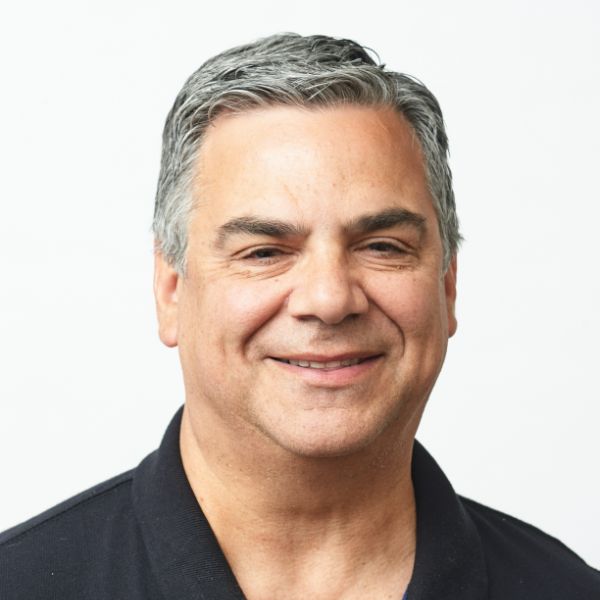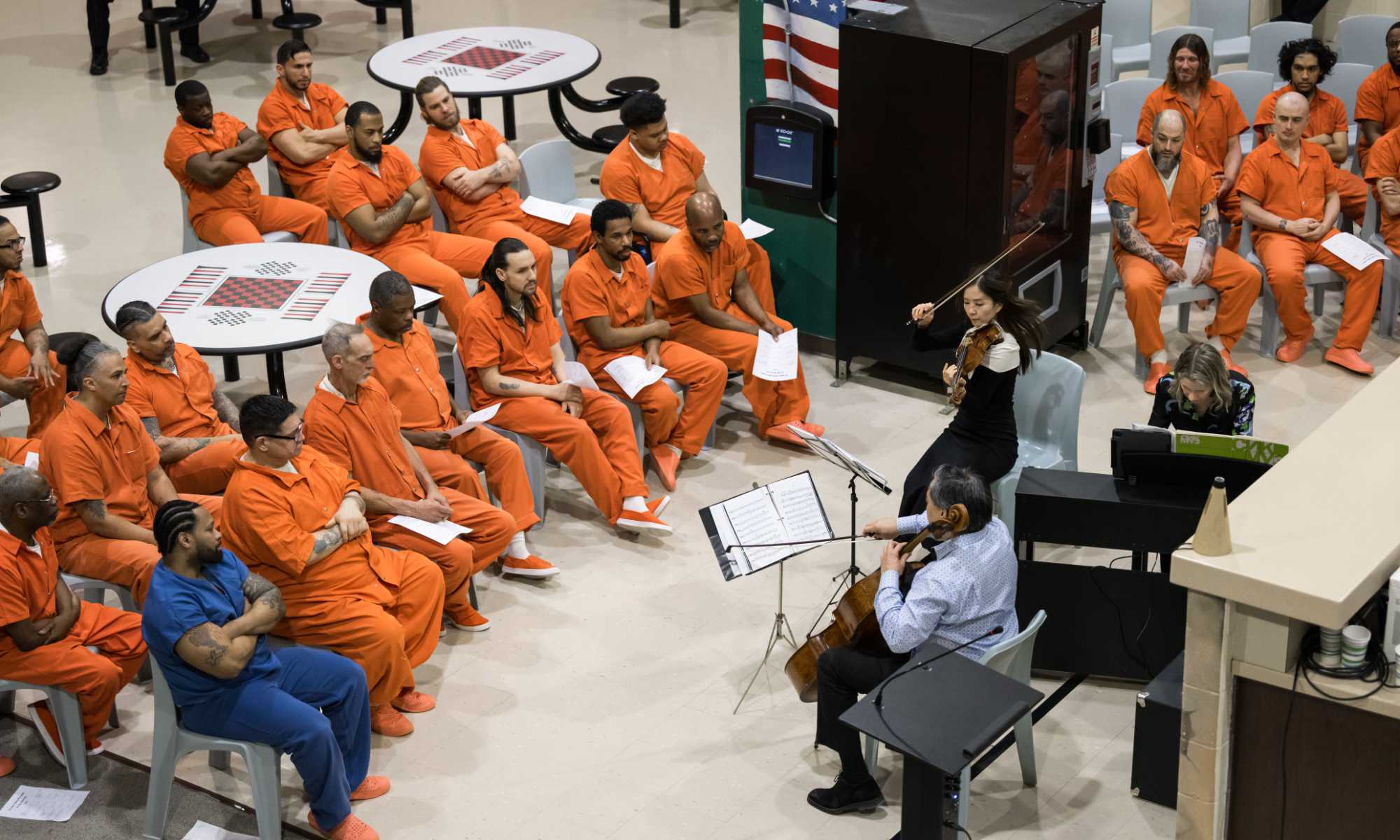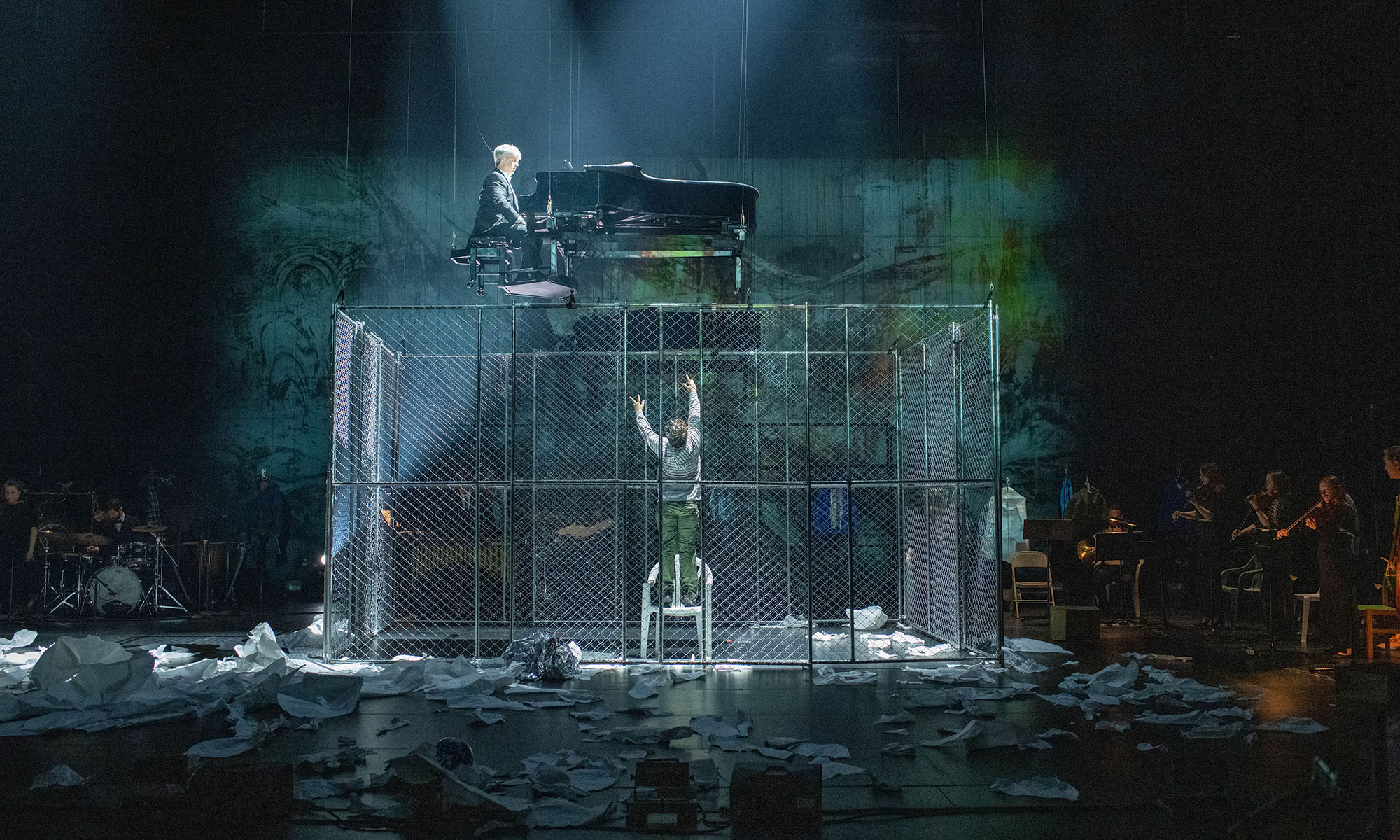On Veterans Day, we honor those who serve their country, including Eastman School of Music alumni who have played in US military ensembles through the decades.
Rachel Perry ’13E (MM) had long been interested in playing for a US military band. So when a saxophone vacancy was posted online the summer before she graduated from the University of Rochester’s Eastman School of Music, she jumped at the chance.
“I spent several months preparing for the audition, which is much like that of a major symphony orchestra,” says Perry, an Otselic, New York, native who graduated from the Eastman School with a master’s degree in music performance and literature. “After being selected, I worked with a recruiter to enlist in the Marine Corps and reported directly to Washington, DC, to begin my job duties.”
Since 2014, Perry has been part of the US Marine Band, a 223-year-old ensemble known as “The President’s Own” whose mission is to provide music for the president of the United States and the commandant of the Marine Corps. The band performs regularly at the White House as well as during military funerals at Arlington National Cemetery, heads of state visits, patriotic openers, public events, and Friday evening parades at Marine Barracks Washington. The band also goes on a month-long concert tour every October.
“It’s not a typical 9-to-5 job,” says Perry, who performed at the past two presidential inaugurations alongside fellow Eastman alumni.
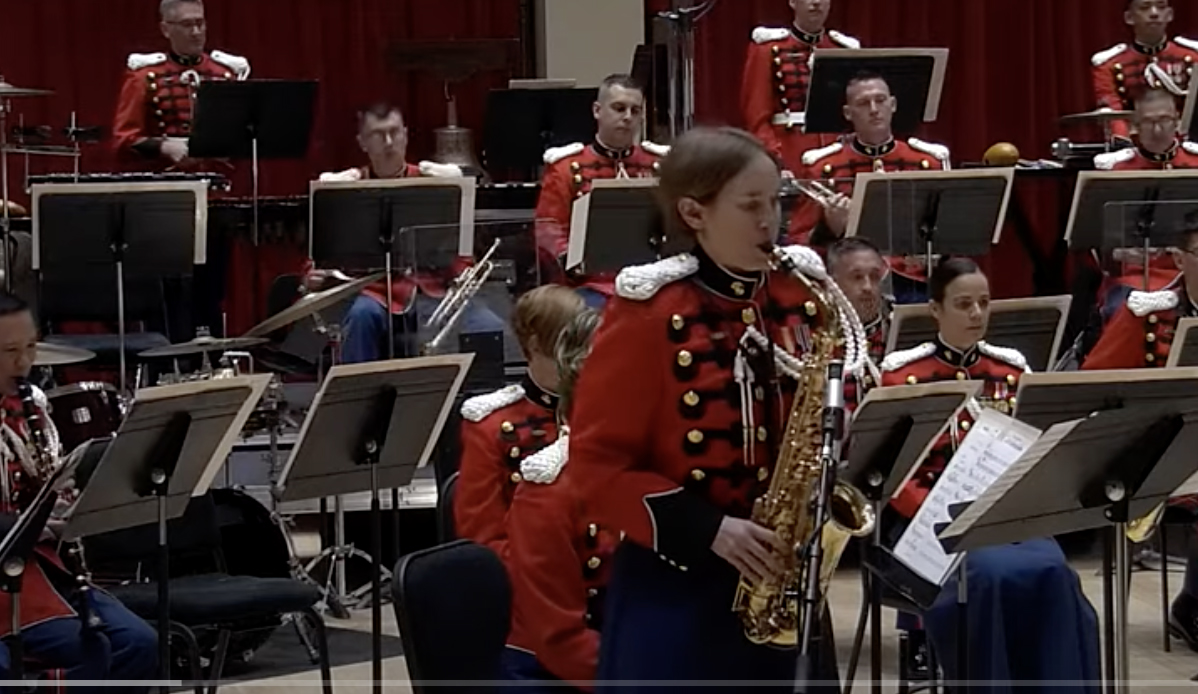
Watch and listen to US Marine Band saxophonist Rachel Perry ’13E (MM) perform as soloist at John Phillip Sousa Hall at Marine Barracks, Washington, DC.
Perry isn’t solely a musician. Like all military band personnel, past and present, she is also a member of the country’s armed forces. Her rank is staff sergeant.
US military bands include musical ensembles maintained by the Army, Air Force, Marine Corps, Navy, and Coast Guard. The bands perform for their service branch, the public, dignitaries, as well as at military funerals. Except for the US Marine Band, which formed in 1798, all of America’s military bands are less than 100 years old. In that time, through war and peace, they have comforted, entertained, and energized people across the globe.
For the bands’ members, the initial enlistment is for four years, after which they can choose reenlistments of varying lengths.
Since the Eastman School’s founding in 1921, its alumni have regularly served in those bands and performed at some of the country’s most historic events. Today, you’ll find Eastman alumni among the ranks of each military band.
“One of the best things about being a musician in ‘The President’s Own’ is the unique way in which I get to use my education and experience as a professional musician to serve my country and the Marine Corps,” Perry says. “Nothing evokes the patriotic spirit quite like hearing a military band play Stars and Stripes Forever or The Star-Spangled Banner.”
Each year, we salute members of the University community who have served in the armed forces. With Eastman marking its centennial, here’s a special look back at select alumni from the school who used their musical talents in service to their country.
Donald Stauffer ’41E, ’42E (MM)
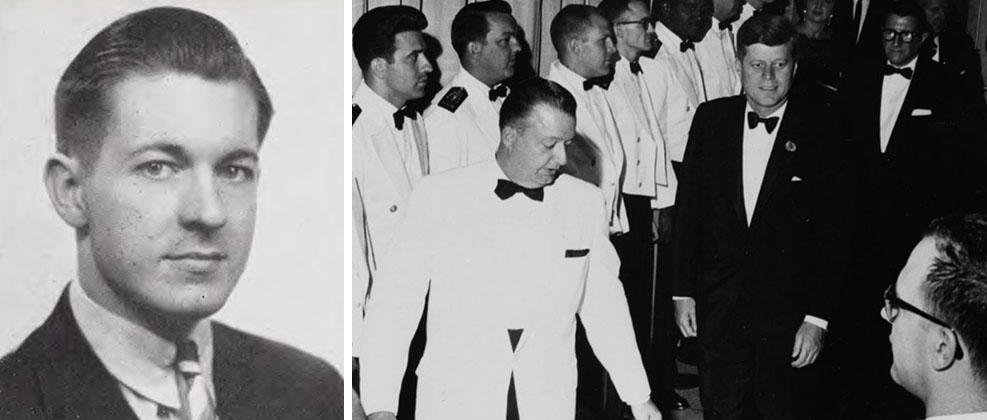
Stauffer joined the US Navy Band in 1942 as a double bassist and tuba player after earning his master’s at Eastman. He served as the third conductor from 1960 to 1964, and was promoted to chief conductor in 1968, a position he held until his retirement in 1973. Stauffer was instrumental in recruiting the band’s first female player-vocalist—Evangeline Bailey—in 1972.
Paul Burgett ’68E, ’72E (MA), ’76E (PhD)
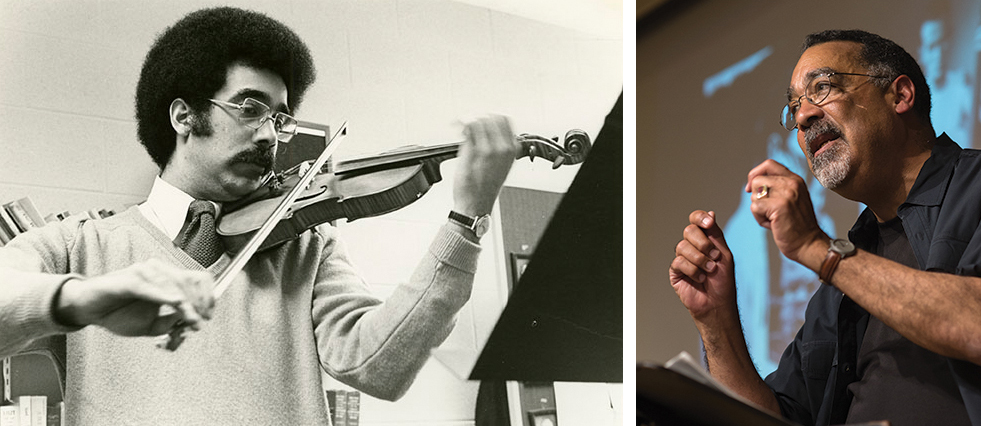
Burgett was a ubiquitous presence at the University and much beloved by generations of students and colleagues as he served in multiple capacities including dean of students, vice president, and advisor to four University presidents. After graduating in 1968—during the height of the Vietnam War—Burgett turned down a postdoctoral fellowship offer and instead served six years in the 98th Division Army Band, playing tuba.
Lewis Buckley ’69E
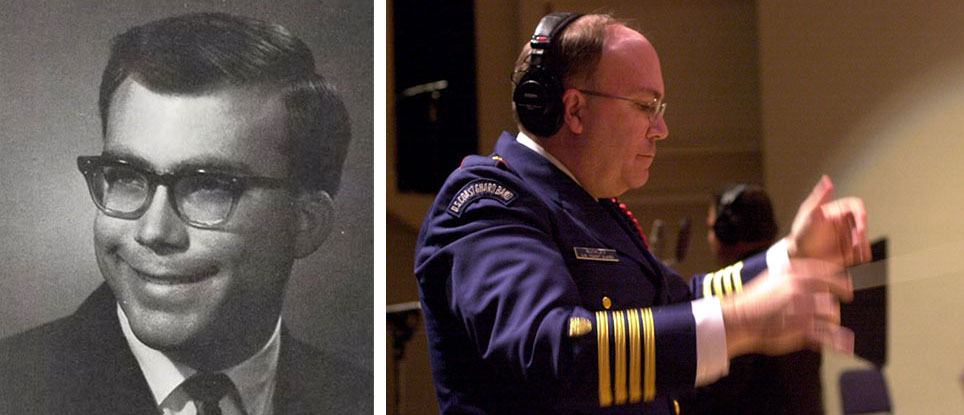
Buckley enlisted in the US Coast Guard Band after graduation and served as principal trumpet and trumpet soloist for six years. In 1975, at age 27, he became the band’s fifth director. Under his baton, the band became a famed national touring organization, releasing 20 recordings and making regular appearances on Nation Public Radio. Buckley held the position for 29 years, the longest of any conductor in the history of American military bands, and during which he composed several pieces for the band to perform, including “Coast Guard Bicentennial March” (1989). Upon retirement, Buckley was named conductor laureate.
Kenneth Megan ’73E

Megan spent 38 years in the US Coast Guard Band and succeeded Buckley as director, serving from 2004 until his retirement in 2013. In the 1980s, he created a series of concert broadcasts on National Public Radio that garnered the Coast Guard Band a national following. While serving as assistant director in 1989, he organized the first tour of any American military band to the Soviet Union and conducted a joint performance of The Stars and Stripes Forever with the Leningrad Military District Band—two years before the Soviet Union’s collapse. In 2008, he led the band on a tour of Japan to celebrate the 60th anniversary of the Japan Coast Guard and the 20th anniversary of the Japan Coast Guard Band.
Megan Sesma ’02, ’02E
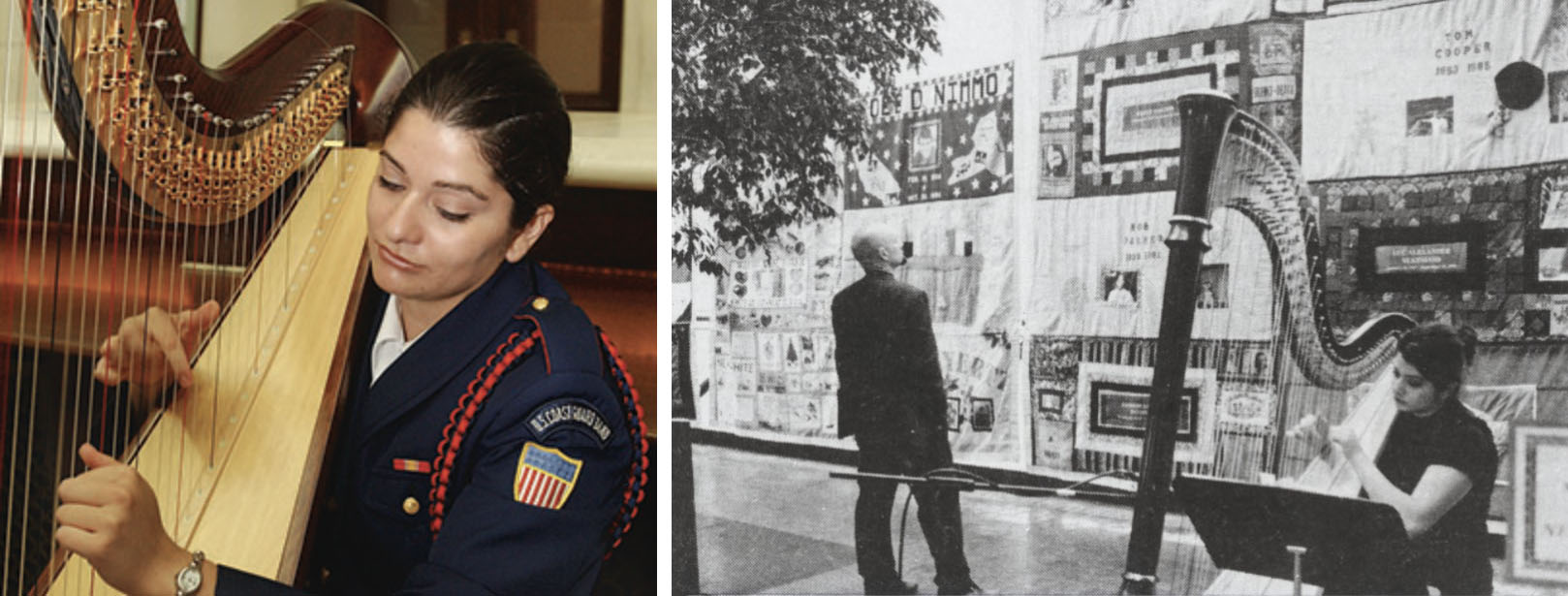
Sesma—who earned a degree in economics on the River Campus in addition to her Eastman degree—was the first harpist ever to become part of the US Coast Guard Band in 2003. She was the 2013 recipient of the Latina Style Award for the Coast Guard, an honor presented annually to one active duty female in the Coast Guard, and has performed at venues ranging from the Tchaikovsky Hall in Moscow, the Hollywood Bowl in Los Angeles, Carnegie Hall in New York, and numerous concert halls in South America.
About the US military bands
- The US Army Band was created in 1922 by Army Chief of Staff John Pershing in emulation of European military bands he had heard during World War I. The band completed national tours in the 1920s and 1930s. In June 1943, at the height of World War II, it was called overseas to perform in North Africa and Europe. Its headquarters are in Arlington, Virginia.
- The US Air Force Band is the youngest of the military bands, having formed in 1941—less than three months before the Japanese invasion of Pearl Harbor. It’s based at Bolling Air Force Base in Washington, DC. After World War II, all but five members left for civilian life, but lead conductor George S. Howard embarked on a national recruiting program and increased the band to 115 members.
- The US Marine Band is the oldest professional musical organization in the United States, established by an act of Congress on July 11, 1798. Thomas Jefferson requested that the band play at his inauguration in 1801, and it has performed at every presidential inauguration since. Jefferson called the band “the President’s Own,” a nickname that continues to this day. Headquarters are in Washington, DC.
- The US Navy Band was created in 1925. One of its early notable performances included marking the historic return of Charles Lindberg following his transatlantic flight in 1928. On February 25, 1960, 19 members of the band were killed when its Navy transport plane collided midair with a Brazilian airliner in dense fog near Rio de Janeiro.
- The Coast Guard Band was created in 1925 and is stationed in New London, Connecticut. One of the main organizers of the band was John Philip Sousa, who composed The Stars and Stripes Forever. In 1989, the Coast Guard was the first American ensemble to tour the Soviet Union.

